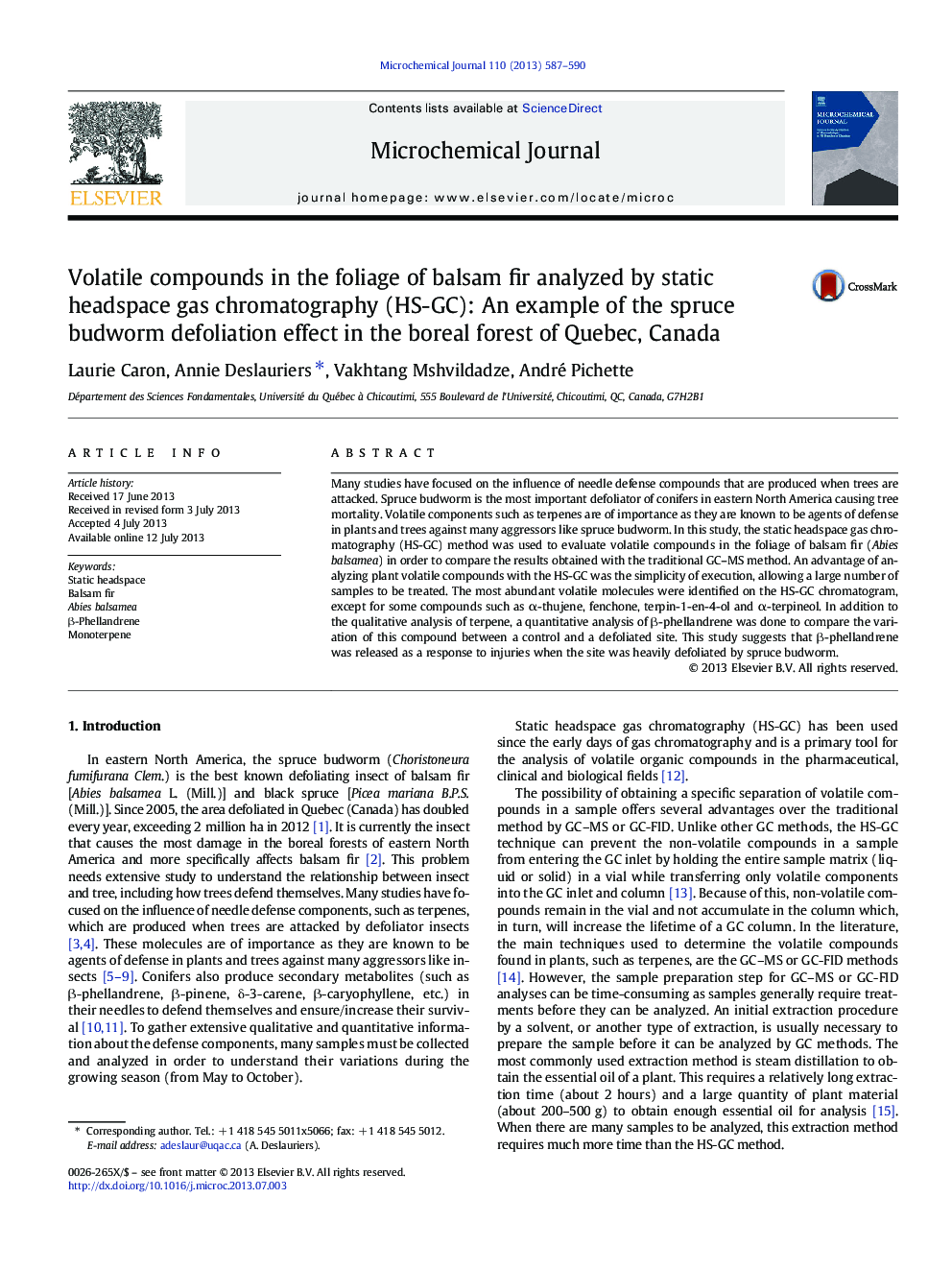| Article ID | Journal | Published Year | Pages | File Type |
|---|---|---|---|---|
| 7644060 | Microchemical Journal | 2013 | 4 Pages |
Abstract
Many studies have focused on the influence of needle defense compounds that are produced when trees are attacked. Spruce budworm is the most important defoliator of conifers in eastern North America causing tree mortality. Volatile components such as terpenes are of importance as they are known to be agents of defense in plants and trees against many aggressors like spruce budworm. In this study, the static headspace gas chromatography (HS-GC) method was used to evaluate volatile compounds in the foliage of balsam fir (Abies balsamea) in order to compare the results obtained with the traditional GC-MS method. An advantage of analyzing plant volatile compounds with the HS-GC was the simplicity of execution, allowing a large number of samples to be treated. The most abundant volatile molecules were identified on the HS-GC chromatogram, except for some compounds such as α-thujene, fenchone, terpin-1-en-4-ol and α-terpineol. In addition to the qualitative analysis of terpene, a quantitative analysis of β-phellandrene was done to compare the variation of this compound between a control and a defoliated site. This study suggests that β-phellandrene was released as a response to injuries when the site was heavily defoliated by spruce budworm.
Related Topics
Physical Sciences and Engineering
Chemistry
Analytical Chemistry
Authors
Laurie Caron, Annie Deslauriers, Vakhtang Mshvildadze, André Pichette,
